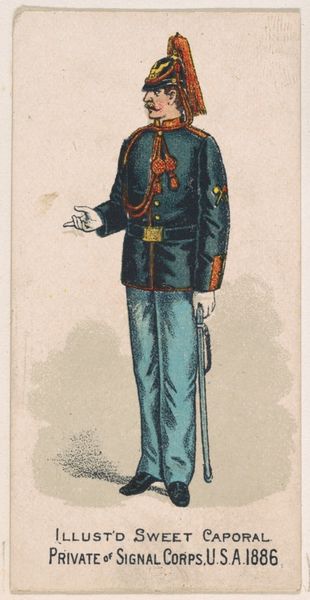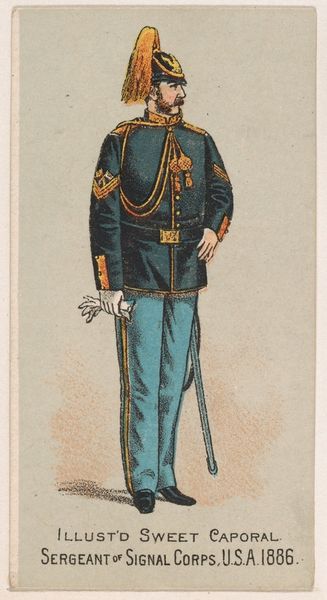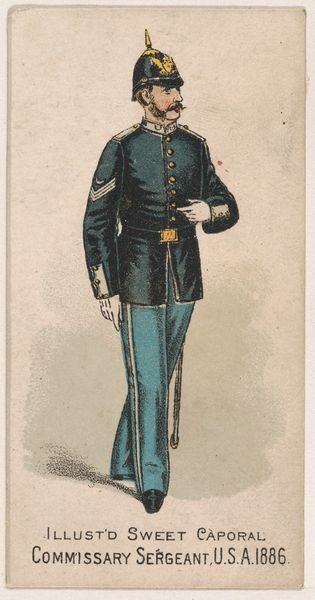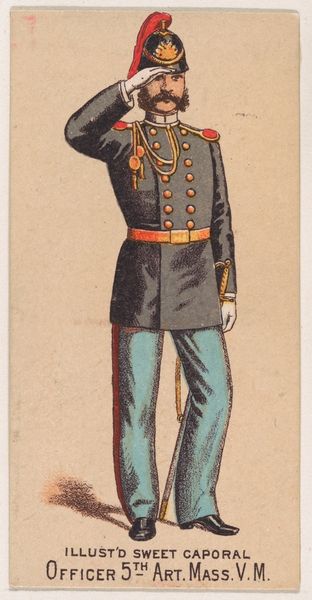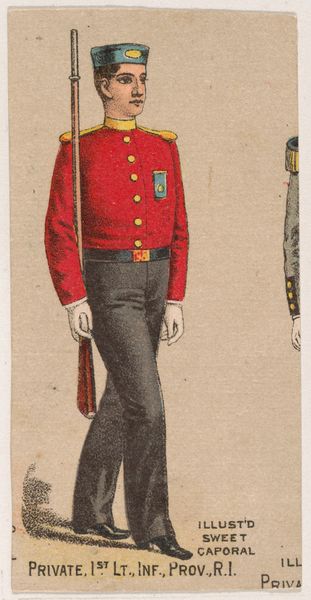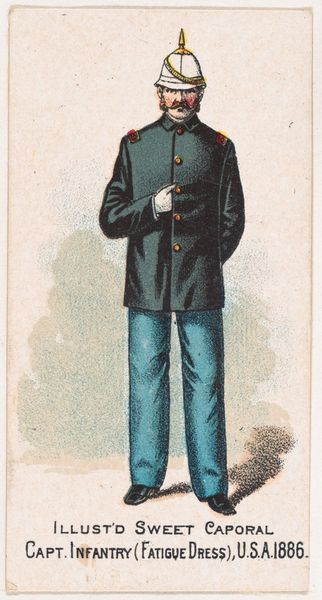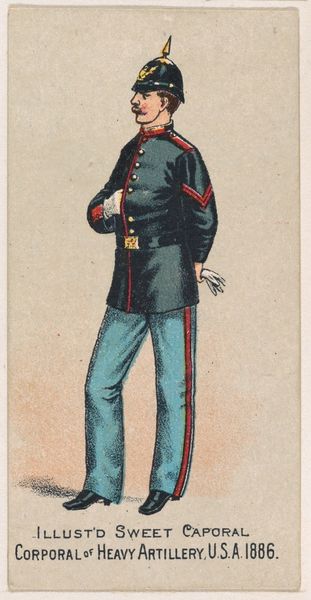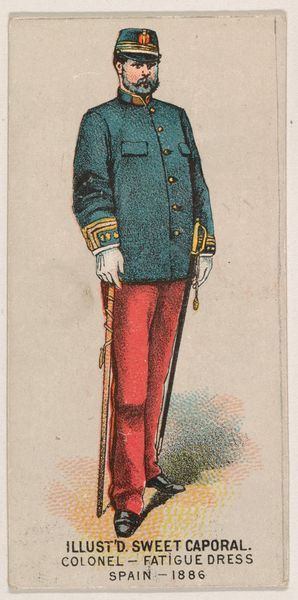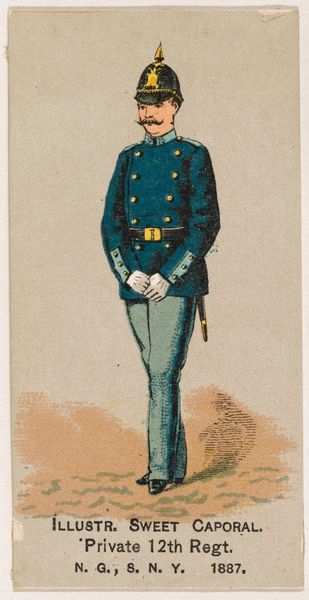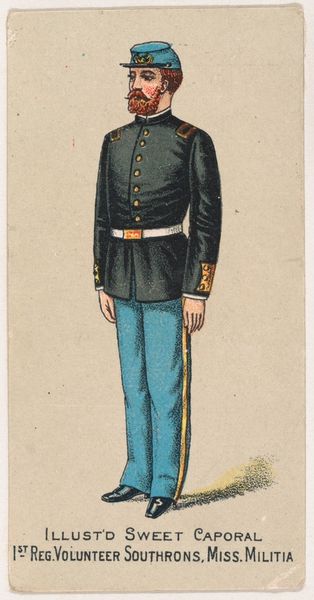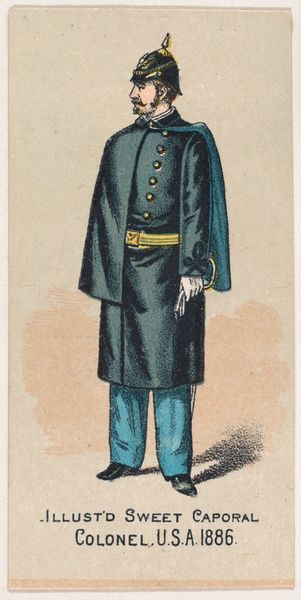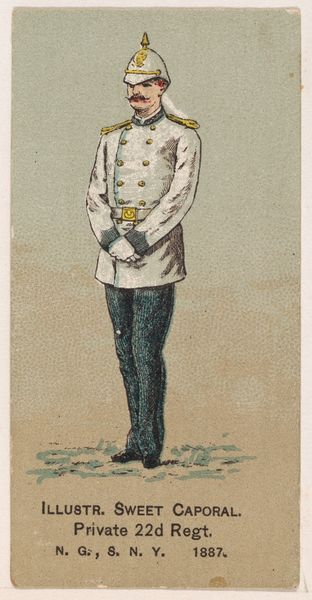
Bandmaster, United States Navy, 1886, from the Military Series (N224) issued by Kinney Tobacco Company to promote Sweet Caporal Cigarettes 1888
0:00
0:00
drawing, print
#
portrait
#
drawing
# print
#
caricature
#
caricature
#
men
#
genre-painting
#
academic-art
Dimensions: Sheet: 2 3/4 × 1 1/2 in. (7 × 3.8 cm)
Copyright: Public Domain
Editor: Here we have "Bandmaster, United States Navy, 1886" a print made around 1888 by the Kinney Tobacco Company. There’s something both dignified and slightly absurd about his upright posture and the almost cartoonish rendering of the uniform. What catches your eye when you look at this image? Curator: It’s fascinating to consider this image within the context of late 19th-century advertising and evolving perceptions of militarism. While seemingly a simple portrait, this image reflects the intersection of commerce, national identity, and perhaps even the construction of masculinity at the time. This was era of rapid industrialization, heightened social stratification and imperialist expansion. Editor: How so? Curator: Well, consider who this image was meant to reach: consumers. The bandmaster, in his elaborate uniform, projects an image of strength, discipline and order. How complicit are such images in normalising the role of the military within civilian life? This, coupled with its use in promoting tobacco, also subtly ties these virtues to consumerism, suggesting that purchasing Sweet Caporal cigarettes is also aligned with notions of patriotism and upward social mobility. Think of the military as the ultimate symbol of hierarchy at the time! Editor: So you're suggesting it's less about the individual bandmaster and more about the image that the uniform and the tobacco company are trying to project? Curator: Precisely! It's about the larger cultural forces at play and how they shape our understanding of power, identity, and consumer culture. And, let’s not ignore the power dynamics inherent in depicting a uniformed figure during a period marked by racial tensions and social inequalities, since this bandmaster, very likely, only represents a very specific segment of American society. Who gets to be represented? Whose stories are prioritized? Editor: That’s given me a lot to consider. It’s far more layered than I initially thought. Curator: Exactly! By examining these historical threads, we can develop a more nuanced understanding of the complex relationships between art, commerce, and society.
Comments
No comments
Be the first to comment and join the conversation on the ultimate creative platform.
